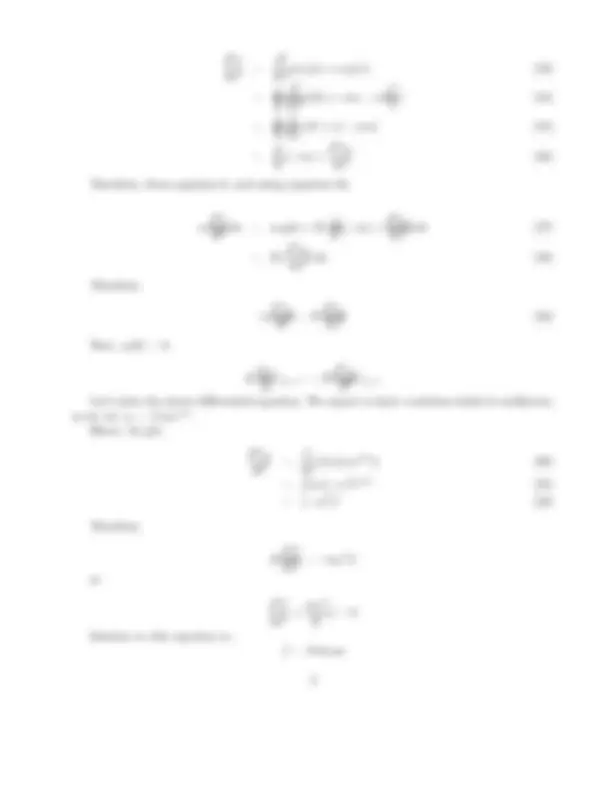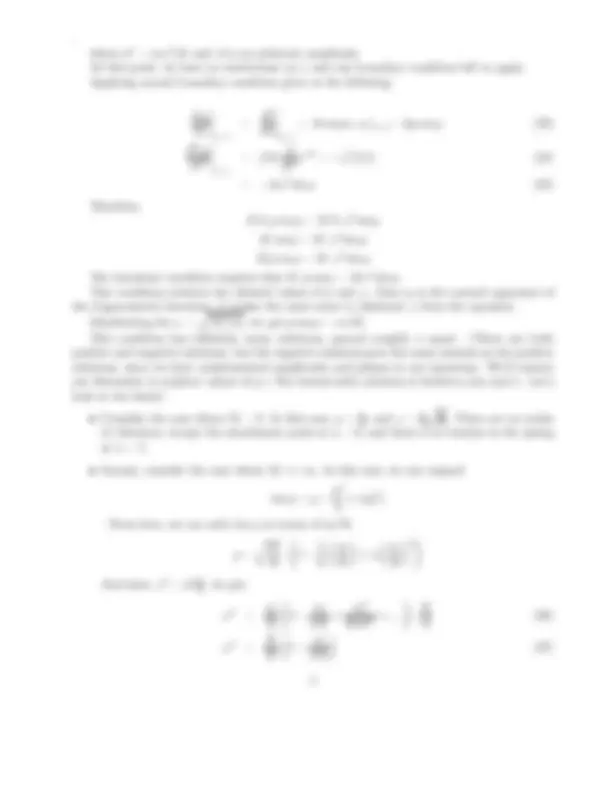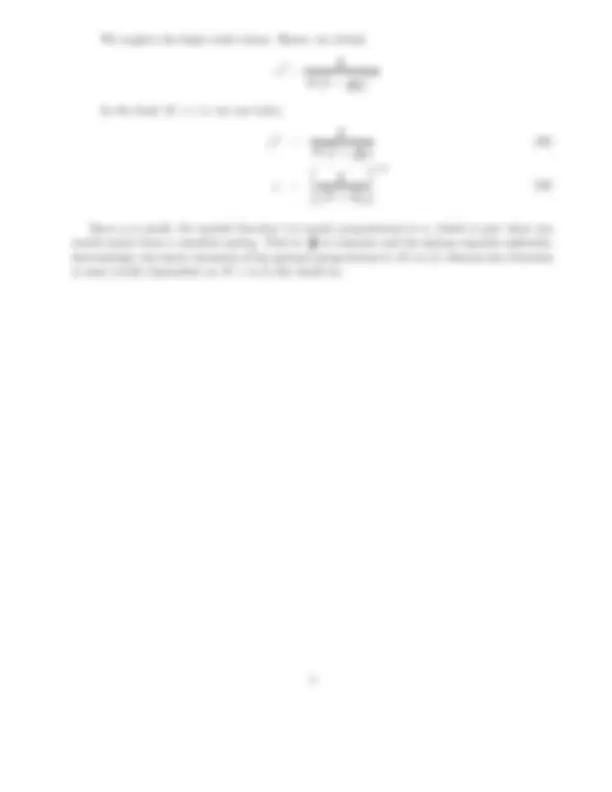





Study with the several resources on Docsity

Earn points by helping other students or get them with a premium plan


Prepare for your exams
Study with the several resources on Docsity

Earn points to download
Earn points by helping other students or get them with a premium plan
Community
Ask the community for help and clear up your study doubts
Discover the best universities in your country according to Docsity users
Free resources
Download our free guides on studying techniques, anxiety management strategies, and thesis advice from Docsity tutors
Harmonic Oscillations of a soft Massive Spring
Typology: Summaries
1 / 5

This page cannot be seen from the preview
Don't miss anything!




November 8, 2010
Ist Semester Experimental Physics Lab (National Institute of Science and education and research, Bhubaneswar, India.)
Let the spring have mass m and an attached mass M. Let the spring have a spring constant K. Now, a fraction f of the spring will deform by ux if the entire spring deforms by x (if the spring is horizontal, so that we may ignore its own weight). Since all parts of the spring are under the same force, the spring constant of a fraction f of the spring must be K/u. Now let’s consider the extension of the spring under its own weight m and the attached weight M. We need a coordinate to represent position along the spring. Let the fraction of the spring which is above a particular point P be represented by u, so that u = 0 at x = 0 and u = 1 at x = 1, where it is attached to the weight M. At any given point P, the tension in the spring F is given by
F = Mg + (1 − u)mg and (1 − u)mg is the fraction of mass below a point P.
A small section of the spring du has spring constant k/du as shown below :
du
dx (1)
dx = F
du K
Integrating from zero to u gives the extension of the spring at the position u, x(u) as below : ∫ (^) u
0
dx =
∫ (^) u
0
Mg + (1 − u)mg
du K
x(u) =
Mg K
u +
mg K
u −
u^2 2
mg K
g K
(Mu + mu − m
u^2 2
g K
(Mu + m ∗ (u −
u^2 2
The displacement x is measured relative to the corresponding location if there were no load on the spring. So, if the spring has a natural length l, then the position relative to the anchor point is x + ul.
Therefore at rest, the spring is stretched by,
x(1) =
g K
m 2
Now let’s consider the spring in motion. If we look at a small section of the spring du, then the force on that section is its own weight mgdu plus any difference in the tension in the spring below the section and the tension in the spring above the section. We find
F = mgdu + dτ
. We know that the tension in the spring is proportional to its extension
τ = K
dx du Therefore, dτ = K
d^2 x du^2 We can now write the governing differential equation,
F = mgdu + K
d^2 x du^2
du
Therefore we get,
m
d^2 x dt^2
du = mgdu + K
d^2 x du^2
du (8)
The solution must also satisfy the boundary conditions at u = 0 and u = 1.
τ (1) = k
dx du
|u=1 = MgM
d^2 x dt^2
|u=1 (9) τ (0) = 0 (10)
The solution is additive. x = xs + xd, where xs is the static portion given above, and xd is the dynamic part. Using,
xs(u) = [Mu + (u − u^2 /2)m]g/K (11) we can remove the static components from the differential equation and the boundary conditions. We find
d^2 xd du^2
= m
d^2 xd dt^2
We can show this as below :
m
d^2 xd dt^2
g K
m 2
where p^2 = mω^2 /K and A is an arbitrary amplitude. At this point, we have no restrictions on ω and one boundary condition left to apply. Applying second boundary condition gives us the following
dxd du
∣∣ ∣∣ ∣u=1^ =^
df du
∣∣ ∣∣ ∣u=1^ =^ A^ cos^ pu^ ·^ p^ |u=1=^ Ap^ cos^ p^ (23) d^2 xd dt^2
∣∣ ∣∣ ∣ u=
= f (1)
d dt^2
eiωt^ = −ω^2 f (1) (24)
= −Aω^2 sin p (25)
Therefore, KA p cos p = MA ω^2 sin p K cos p = M ω^2 sin p Kp cos p = M ω^2 sin p The boundary condition requires that K p cos p = Mω^2 sin p. This condition restricts the allowed values of p and ω. Since p is the natural argument of the trigonometric functions, it makes the most sense to eliminate ω from the equation,
Substituting for ω =
√ (K/m), we get p tan p = m/M. This condition has infinitely many solutions, spaced roughly π apart. (There are both positive and negative solutions, but the negative solutions give the same answers as the positive solutions, since we have undetermined amplitudes and phases in our equations. We’ll restrict our discussion to positive values of p.) The lowest-order solution is between zero and π. Let’s look at two limits.
√ K m. There are no nodes of vibration, except the attachment point at u = 0, and there is no tension in the spring at u = 1.
tan p = p −
p^3 3
. From here, we can solve for p in terms of m/M.
p =
√ m M
( 1 −
( m M
)
( m M
) 2 )
And since ω^2 = p^2 K m , we get,
ω^2 =
m M
( 1 −
m 3 M
m^2 36 M^2
) ·
m
ω^2 =
( 1 −
m 3 M
) (27)
We neglect the higer order terms. Hence, we obtain
ω^2 =
( 1 − 3 mM
)− 1
In the limit M >> m we can write,
ω^2 =
( 1 + 3 mM
ω =
(^) ( K M + m 3
)
1 / 2 (29)
Since p is small, the spatial function f is nearly proportional to u, which is just what you would expect from a massless spring. That is, df du is constant and the spring expands uniformly. Interestingly, the static extension of the spring is proportional to M +m/2, whereas the vibration is more nearly dependent on M + m/3 (for small m).